YOUR BROWNSTONE WAS NOT BUILT IN 1899
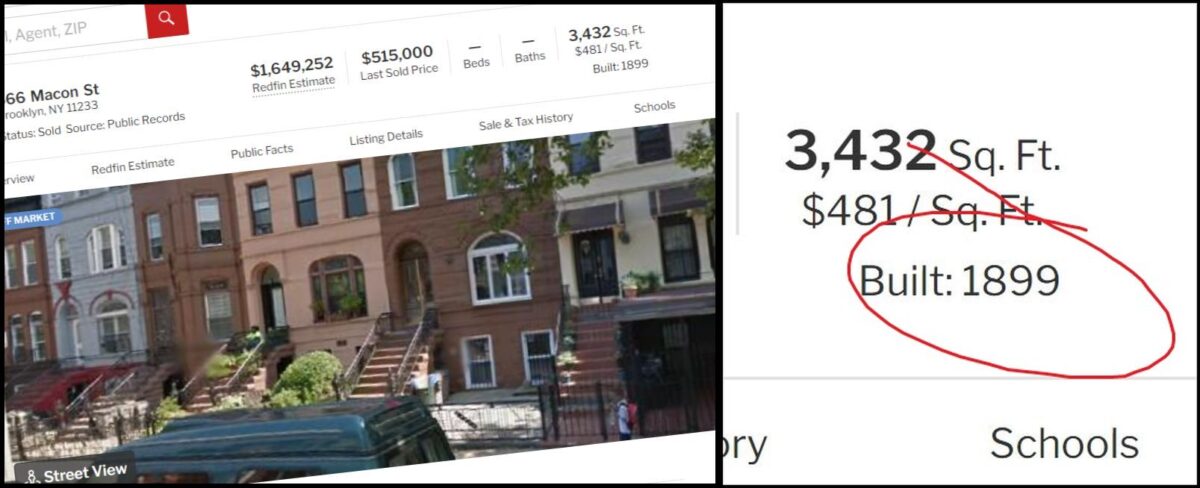
Brownstone Detectives investigates the history of our clients’ homes.
The story you are about to read was composed from research conducted in the course of one of those investigations.
Do you know the history of YOUR house?
********************************************************************************************************************************
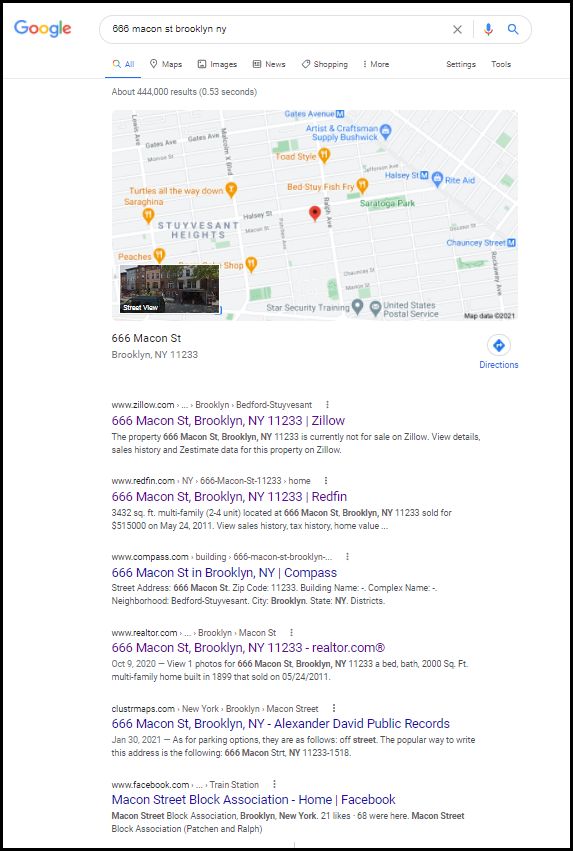
We’ve all “Googled” ourselves, right?
But have you ever Googled your house?
Most people do this out of curiosity – just to see what might pop up.
If you’ve ever done it, though, you were likely greeted with an extensive list of real estate sites that literally entreated you to click their links.
Click on one of them and you may be surprised at what you find. Apparently, using their fancy algorithms, these sites can tell you nearly every detail under the sun about your property.
These details include: the number of stories your house has, how many units are inside, the legal type of building it is, the district it lies within, its floor plans, the name of its neighborhood, its estimated value, various documents and permits filed, past sales, rental – and the list goes on and on…
You may possibly even see images of the exterior of your rowhouse, as well as numerous snapshots of the inside (likely from a previous sale).
For the most part you may note that everything – so far as you can tell – is relatively correct.
There is, however, one very important piece of information that, on 99% of informational listings (including yours), is dead wrong…
“BUILT IN 1899”?
Why does nearly every real estate site state that nearly every New York City rowhouse was built in 1899?
Is it possible that Brooklyn, for example, was completely built up within those 365 days of the very last year of the 19th century?
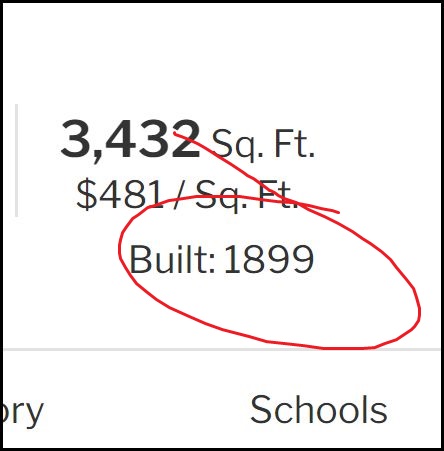
Well, it is a good question that has a very simple short answer.
The purveyors of these real estate sites have no idea when your house was built.
Now, you cannot blame the real estate sites, because it really isn’t their fault that they’re peddling false information.
But why, you might ask – if they know everything else about your house – do they not know this most basic of basic details?
The relatively simple, but slightly more complicated, answer to that question is that these real estate websites get their information from New York City government web sites – those of such city agencies as the Department of Buildings (DOB), the Department of Finance, &c.
So, just to pass the buck along a little further, we can state that it is they who don’t know when your house was built.
This realization, though, doesn’t tell us how old our house is; it merely points to a very important and logical follow-on question:
Why does the city government, which apparently maintains all documents on your house – from financial to structural – not know when your house was built?
WHY IS DATING A HOUSE SO TOUGH?
This question has a very complicated long answer. So, sit down for a while. Take off your shoes. Grab a smoke.
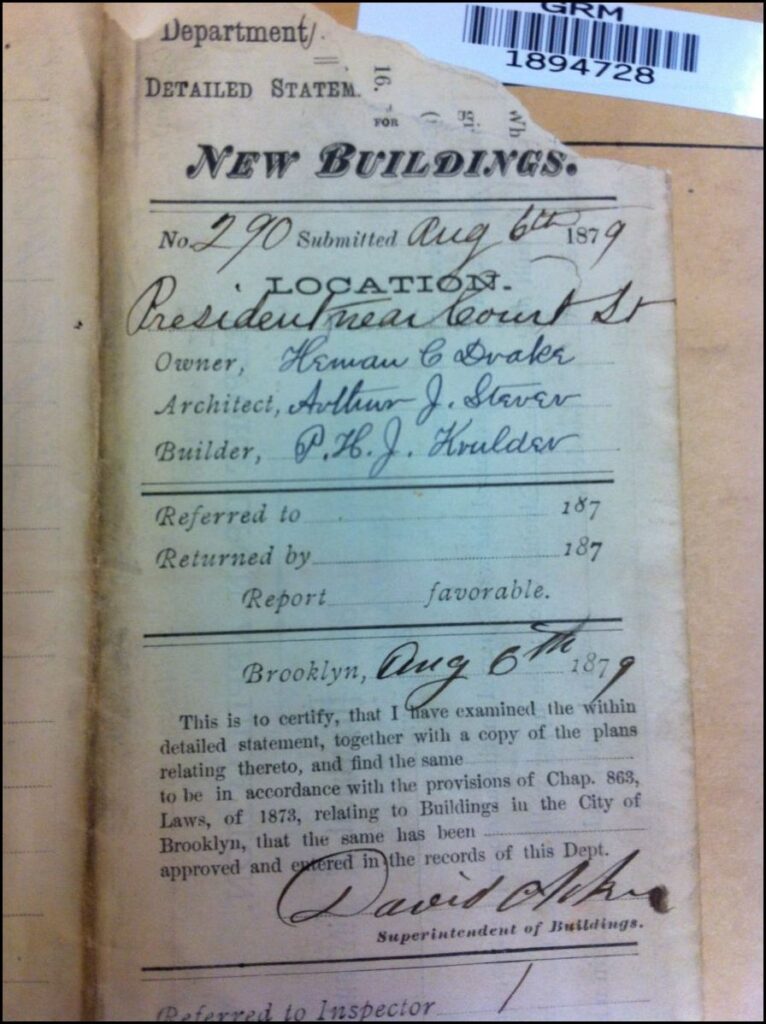
First of all, it is important to understand that New York City government bureaucracy has not always been as wonderfully organized and up-to-date with their record keeping as they are today. 🙂
Seriously, though, at some point when our brownstone houses were being constructed (mostly between the mid-1800s and the early 1900s), the city, realizing that it had to start regulating the safety of a growing city – as well as to ensure that its homeowners were properly taxed according to what sat on their lots – began requiring that builders/homeowners file paperwork with the city’s buildings department to inform them of their proposed new buildings and when they planned to begin construction.
Such a filing – usually called a New Building form – was the trigger for the city to start a file, today known as a property folder, within which would be maintained all documentation and paperwork associated with that property.
As each new repair, renovation, or adjustment to the structure was made, that folder would grow bigger. Sometimes, though, it would grow smaller, as homeowners, architects, or others borrowed, used, or never returned documents to those folders (or the folders, themselves) to the city.
In short, over the many years since the creation of those folders for individual properties, documents and entire folders were lost, some even through natural calamities.
As such, it is clear that the city:
- has an enormous number of property folders, theoretically one for each property,
- the contents of those folders vary (much of it having been “misplaced” over the years),
- and many folders have been lost, misplaced, or even destroyed, themselves.
But this brings us to the bottom line…
THEN THE CITY DOES KNOW WHEN MY BROWNSTONE WAS BUILT?
The answer to this question, for many properties, is, “probably, yes.”
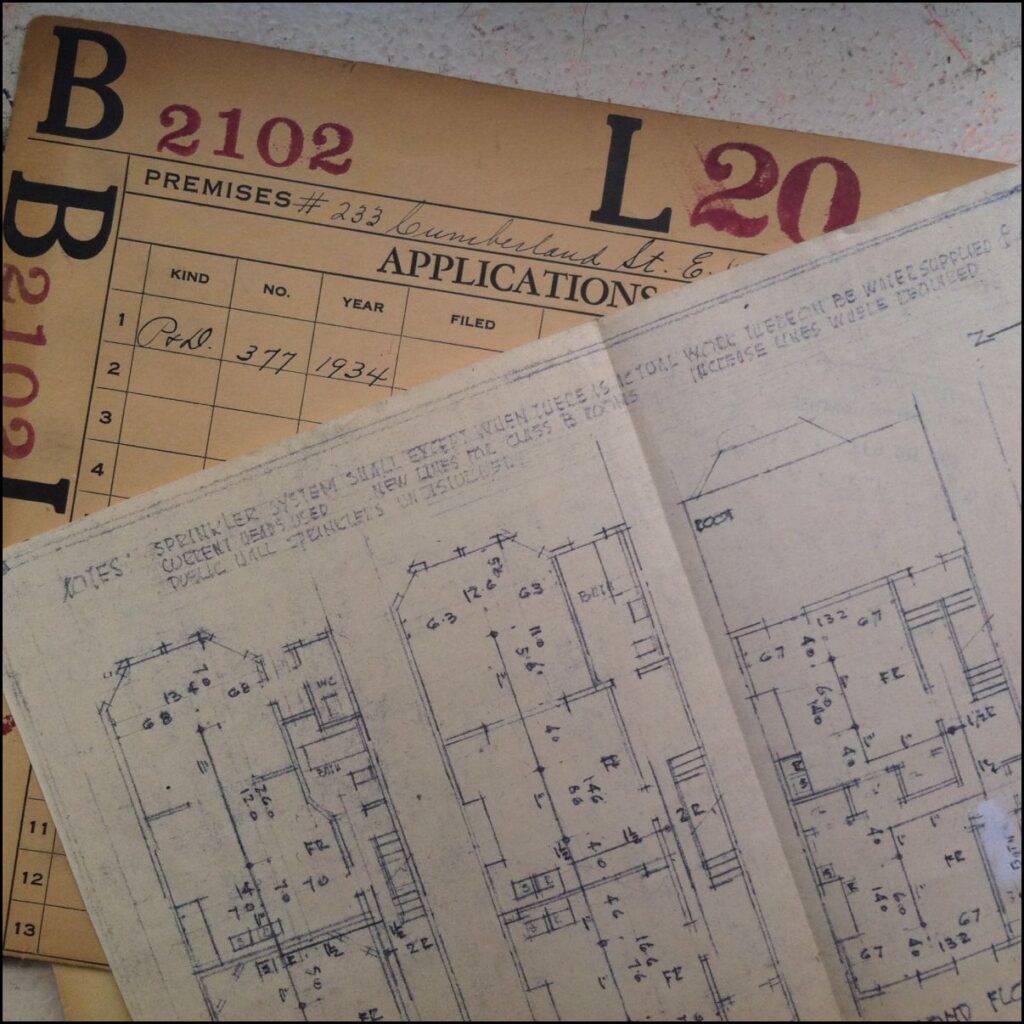
The construction dates of much of the city’s properties sits within hundreds of thousands of musty old folders created by the hands of buildings department clerks more than a hundred years ago.
So, the question that now remains is related more to information access rather than to its simple existence. In other words, how do I get that information if, as the real estate sites have already shown us, we cannot find it through a simple Google search on my computer?
The way to research this simple detail about the age of your brownstone, while not necessarily simple, is doable.
The homeowner can visit the DOB and request (through a customer window at their location within their borough) that they pull their address’s property folder. Oftentimes, those folders are not on site, so this task usually requires a second visit once the particular folder has been delivered (often several weeks later) to that office. At this point, the homeowner must return and, if the record exists – or more often, if the folder can be located – review the contents of their property’s folder.
If a folder can be found, though, imagine the information that lies within – the veritable history of your brownstone, or, rather, more clues that would provide further details that would push you farther along in the research of your brownstone’s history.
There is too much possibility to discuss here, but suffice it to say that the possibilities are limitless.
Now, if a project like this – with its multiple visits to the DOB, interpreting cryptic city codes, disentangling dates and meanings of forms – is too daunting, then it is always possible to identify someone with a history in that business…
…say, a Brownstone Detective…
———————————————————————————————————————–
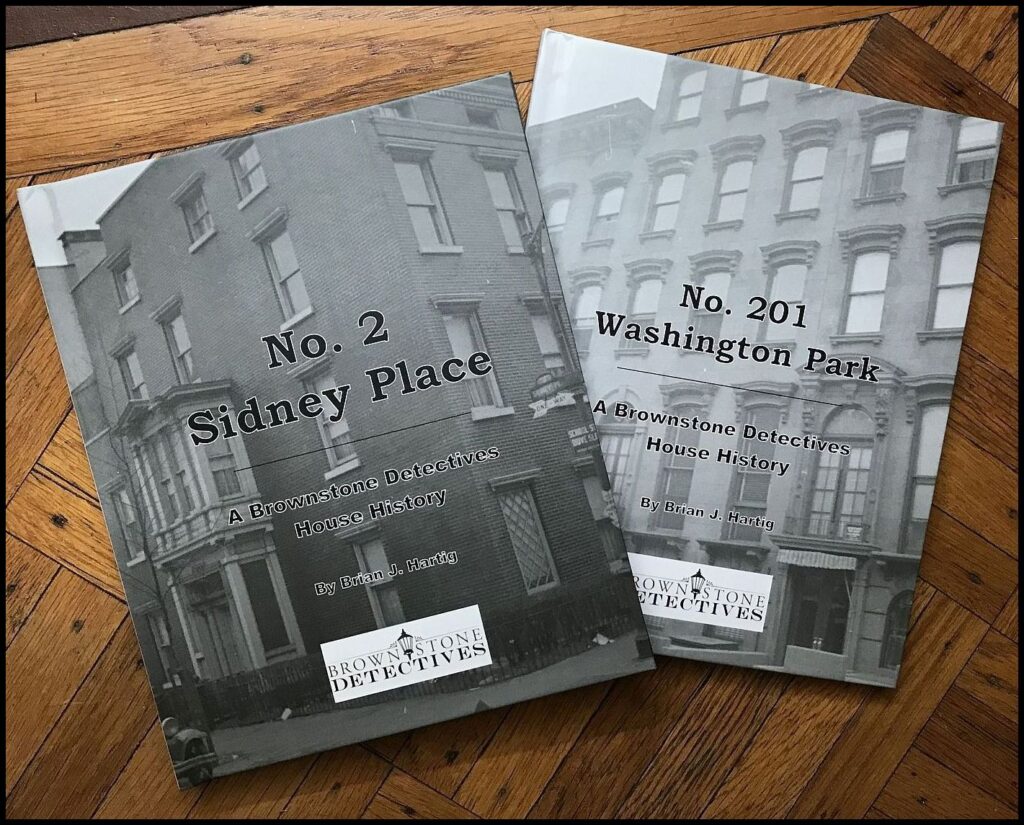 Brownstone Detectives is an historic property research agency. Our mission is to document and save the histories of our clients’ homes. From our research, we produce our celebrated House History Books and House History Reports. Contact us today to begin discovering the history of your home.
Brownstone Detectives is an historic property research agency. Our mission is to document and save the histories of our clients’ homes. From our research, we produce our celebrated House History Books and House History Reports. Contact us today to begin discovering the history of your home.